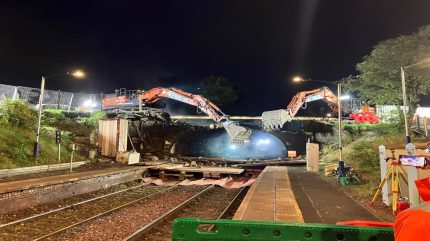
UK operator Network Rail has completed the demolition of two bridges as part of the latest phase of the £140m ($184.06m) East Kilbride enhancements project in Scotland.
The bridges at Thornliebank Road in Glasgow and Westerton Lane near Busby station have been removed to make way for new structures with sufficient clearance for overhead line equipment.
Following the demolition at Westerton Lane, a replacement bridge was positioned using a crane. A similar new structure is planned for Thornliebank Road.
These new bridges will provide the necessary space for installing the overhead line equipment essential for powering electric trains on the route.
Additionally, a new accessible footbridge was installed at the new Hairmyres station, enhancing the station’s accessibility.
Drainage work has also been completed between Hairmyres and East Kilbride stations.
Network Rail is also undertaking a £5m track renewal project at Busby Junction, where the East Kilbride and Barrhead lines converge.
Network Rail senior programme manager Paul Reilly said: “We’re really pleased to have been able to complete these critical elements of the East Kilbride enhancement project. These works are designed to enhance and improve the infrastructure for our passengers and freight customers for years to come.
“We appreciate that there’s never a great time to close lines and our thanks go to passengers and the wider community for their patience over the weekend.”
Network Rail commenced restoration efforts on the Ouse Valley Viaduct in Sussex last month.
The Grade II-listed viaduct is receiving stone and brickwork repairs to ensure its longevity for another 180 years.


